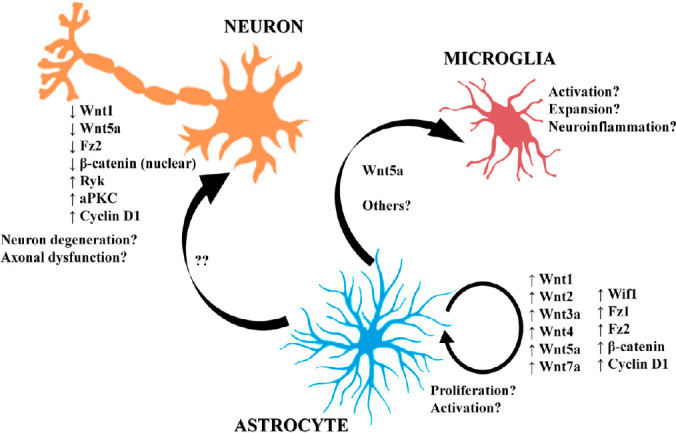Figure 2.

Schematic representation of Wnt-related signaling dysregulations and their hypothetical involvement in ALS neuropathology.
At pathological state, a general gene expression dysregulation of Wnt family members was described in both ALS transgenic mice and human spinal cord. The main current findings highlight the upregulation of several Wnt proteins by astrocytes (Wnt1, Wnt2, Wnt3a, Wnt4, Wnt5a, Wnt7a, Wif1, Fz1, Fz2, β-catenin and Cyclin D1) that may be involved in regulating astrocyte important processes such as proliferation and activation. Furthermore, at least Wnt5a seems to have a role in ALS neuroinflammation by modulating microglial activation and expansion. On the other hand, neurons seem to undergo downregulated in some Wnt family members (Wnt1, Wnt5a and Fz2) and Wnt/β-catenin signaling appear to decay, which might point out to an alteration of cell survival-related signaling pathways. However, other Wnt signaling components (Ryk, aPKC and Cyclin D1) related with axonal dysfunction and the balance between neuronal death and survival processes appear to be upregulated in ALS neurons, suggesting an attempt to promote their own survival and functioning. ALS: Amyotrophic lateral sclerosis. ↑: Upregulation/increase; ↓: downregulation/decrease; aPKC: atypical protein kinase C; ALS: amyotrophic lateral sclerosis; Fz: Frizzled; Ryk: receptor-like tyrosine kinase; Wif1: Wnt inhibitory factor 1.
